The all-new Morgan Super 3 will make you question the need for a fourth wheel.
When it comes to old British roadsters, there’s one company that has been keeping the fire going, and now we’re not talking about TD2000. It’s the Morgan Motor Company. They’ve been keeping their Plus Six and Plus Four models alive and legal to buy thanks to the use of modern BMW engines. Now, they’ve got something even more quirkier than usual, the Super 3.
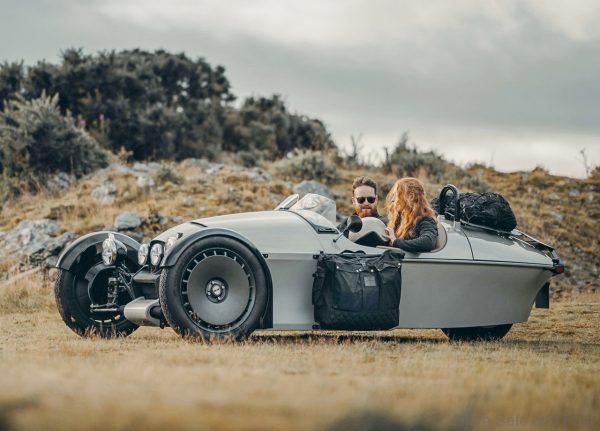
The Super 3 is a three-wheeled, open top vehicle touted as the most configurable model to date. It is handmade in Worcestershire at the same company headquarters that has been running since 1914.
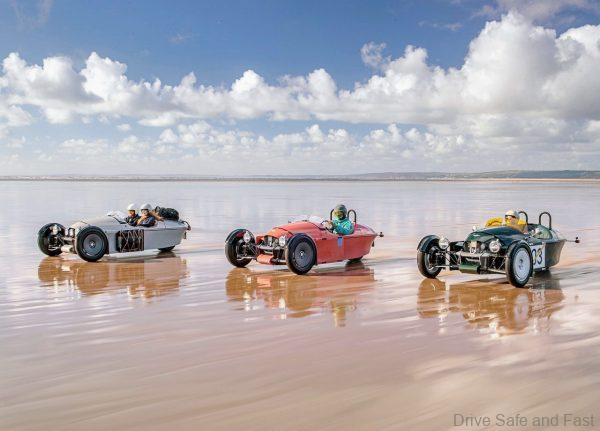
Powering this unique vehicle is a 1.5-litre naturally-aspirated 3-cylinder petrol engine built by Ford. This gives the Super 3 118bhp at 6500 rpm and 150Nm of torque at 4500rpm to move just 635kg around. 0-100km/h is achieved in 7 seconds and it has a top speed of 209km/h.
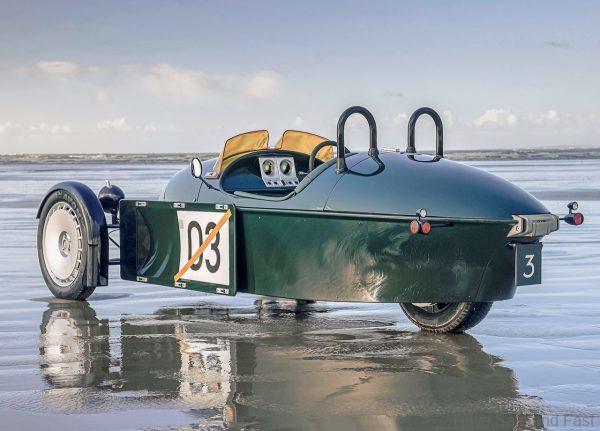
This engine is mated to a 5-speed Mazda gearbox that is found in an earlier version of the MX-5. Particular focus has been paid to Super 3’s cooling package. Using a temperature-, pressure- and load-controlled environment, simulations of the Super 3 running fully laden through challenging environments have been carried out virtually.
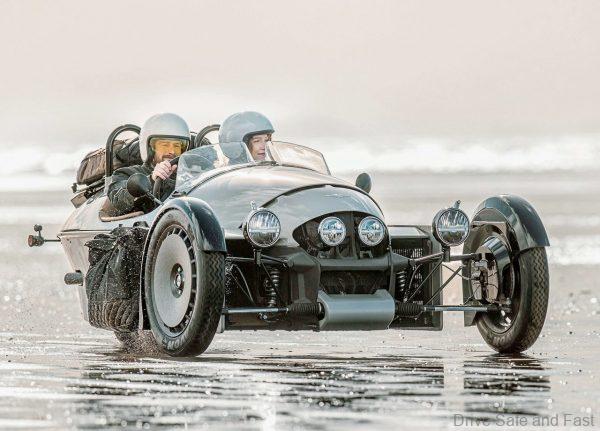
The powertrain is mated to a bonded aluminium Superformed monocoque platform. This is the first true monocoque chassis to be developed by Morgon, but it uses stressed exterior ‘A-surfaces’ rather than the traditional unibody with non-structural panels bolted on.
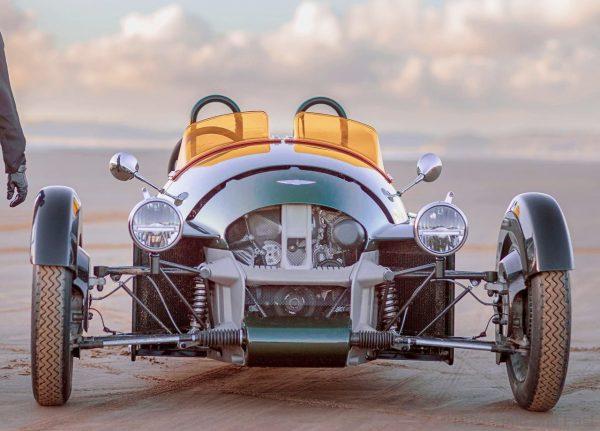
This design allows for a more rigid chassis with fewer intrusions into the cabin. Morgan uses Superform technology in heating and vacuum forming the aluminium that goes into the Super 3.
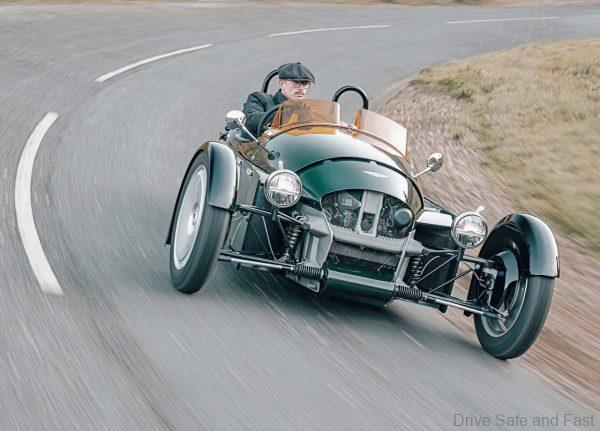
Pull-rod suspension has been used for a fundamentally stable drive. 20″ diameter tyres have been specially designed for the Super 3. Avon supplies these rims as well as the all-season tyres.
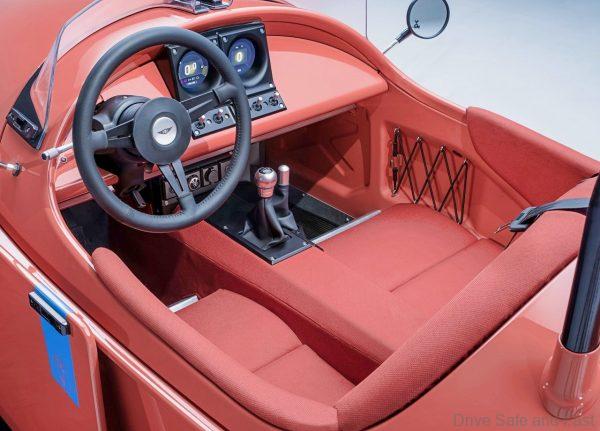
Here’s the press release describing the design of the Morgan Super 3.

PRESS RELEASE
Design
Aerodynamic and mechanical requirements have heavily influenced the form and proportions of Super 3. This is most notable in the cast aluminium structures that provide the face of the vehicle, brace the engine and control the corner packages, while also directing air into the side-mounted cooling packs.
Two rectangular ‘diffuser plates’ – referred to as ‘sideblades’ – intelligently manage cooling requirements while also presenting a platform for panniers, luggage racks and liveries.
Super 3 is Morgan’s first clean-sheet design since the launch of the Aero 8 in 2000 and the company’s biggest visual departure since the 1962 Plus 4 Plus. Super 3 challenges the typical perceptions of Morgan design yet remains true to the company’s underlying principles and heritage.
The exact positioning of the engine – now car-derived and mounted in-board – within Super 3 is of crucial importance. Chosen in part due to its compact nature, the inline three-cylinder block sits precisely behind the front axle line, delivering optimum weight distribution and desirable proportion. The latter is a key principle for Morgan’s designers, who determine it vital that the body of the car is visually towed by its front wheels rather than sat on top of them. Super 3 has a mechanically intricate front end and exhibits linear geometry, which is intentionally contrasted against the trailing aerodynamic passenger compartment.
Honesty of design is one of Morgan’s key principles, and Super 3 embodies this wherever you look. Every feature – no matter how superficial it may appear – has an underlying mechanical purpose: the vehicle celebrates the marriage of design and engineering. Examples of this are prominent throughout Super 3. Features such as the metallic impressions in the footwell side panels, which stiffen the surface but are exposed as a design feature. Everything is honest, with reason.
Face
Morgan Super 3’s face portrays two familiar headlights and a horseshoe front grille, both recognisable elements of Morgan design. Mounted on the headlight pods are two small, machined aluminium turrets. These turrets house the indicators and position lights, satisfying wide field-of-vision requirements and resulting in the headlights themselves sitting lower and delivering a low-slung, purposeful aesthetic.
The engine resides beneath the nose cone, which is positioned deliberately to deliver both optimal weight distribution and desirable proportion. This visual mass sits directly behind the centre line of the front wheels and is a principle proportion of Super 3. Beneath the cowl, the engine is visible through a mesh with its moving mechanical components clear to see.
Bracing the engine are structural aluminium castings finished in silver or black. These castings support the engine and corner packages while also ducting air into the cooling packs. The mechanical requirements of these castings have delivered the character of Super 3’s face and have become a crucial design element.
All of the elements of Morgan Super 3’s wishbones, pull-rod suspension and headlight structure have been shaped to assist airflow to the radiators behind them, and the mechanical complexity is reminiscent of that of early-century three-wheeled Morgans. The headlight stalks themselves are structural, acting as an additional brace between the upper and lower wishbone pick-up points, while continuing to reflect the vehicle’s trihedral theme.
As well as providing an aerodynamic advantage, the pull-rod suspension brings dynamic benefits by reducing unsprung weight. In parallel with the shape of the front casting, it facilitates a free flow of air towards the side-mounted radiator packs. Visually, the setup reduces clutter and is yet another example of form and function being one and the same.
The engine mount strategy is unique to Super 3. Specifically, the Hartland Strut – named after the Morgan engineer that designed it – is the foremost mount and integral to the face of the car, while managing the torque reaction of the engine.
The front wheel design is by Morgan. The wheels’ positive offset allows for the longest possible suspension wishbones, with the brakes mounted far out. This maximises ride quality, handling and stability. The inside face of the wheel arches is closed-off, which works aerodynamically both to reduce wind noise and to help the flow of cooling air to the radiators behind them. To keep Super 3 looking proportionally correct, an all-new tyre has been developed with Avon (see driving dynamics, below).
Sideblades (diffuser plates)
One challenge faced during the creation of Morgan Super 3 was the desire to maintain a small footprint while also improving on the turning circle of the outgoing model. Sculpted castings carefully flank the engine, with rectangular radiators sitting outboard of these castings, and this limited the space available for the front wheels.
To overcome this challenge, the radiators have been encapsulated behind extremely thin and flat panels. On a jet aircraft, these panels would be referred to as ‘diffuser plates’; on Super 3, these ‘diffuser plates’ are referred to as the ‘sideblades’. The sideblades efficiently manage inbound and exhaustive airflow through the radiators.
Coincidently, this aesthetic reflects a long-standing Morgan design trait of a central body flanked by separate wing forms.
The sideblades also allow numerous luggage mounting options thanks to some uniquely designed universal fixings, also referred to as ‘accessory rails’. Owners can choose from a range of panniers and exo racks that are neatly fixed and secured to the sideblades. The feedback and experience of existing 3 Wheeler owners has been instrumental in determining Super 3’s adventure and touring credentials. During a decade of Morgan 3 Wheeler production, owners have taken their vehicles on road trips and adventures around the world. These adventures, combined with adventure motorcycle touring and overland vehicle design, provided inspiration to Super 3’s designers throughout the project.
Sideblades can be painted to match the main body colour or finished in a contrasting colour, and they provide a canvas for the application of decals and livery packs.
Tail
While the front end embodies mechanical honesty, the tail contrasts this with elegant, streamlined simplicity. An exposed rib forms a beltline around the vertical midpoint of the vehicle. This feature is a nod to traditional seam joining techniques deployed on mid-century aircraft fuselages, and it is often apparent in ‘belly tank’ racers and early jets. Beneath it lies a unique cut-off tailpipe design, a feature that would normally be impossible but which meets regulations due to its positioning inbound of this beltline.
A casting at the rear apex of Super 3 mirrors the texture and functional prowess of the front castings. Primarily, the rear casting clamps the two sides of the monocoque structure together. However, it also houses the fog and reverse lights, provides a base for the number plate mount and obscures the all-important pressure relief venting for the rear wheel well. Furthermore, the rear casting integrates a hinge for the rear boot lid and optional luggage rack, and it allows this accessory to be lifted independently or in unison with the boot. Underneath the rear clamshell boot is an enclosure sculpted to provide maximum luggage capacity.
Interior
The interior of Morgan Super 3 has – necessarily, given its adventure credentials – been designed for resilience. Rated at an approved ingress protection level of IP64, any part of the interior is completely dust-tight and protected against water splashing from any direction, even down to the integrated USB sockets.
The minimalist dashboard features Morgan’s traditional centre-mounted dials, but for the first time in a Morgan they are fully digital. Their surrounds – available in both anodised black or silver finishes – are formed from metal, just like any touchpoint in the cabin, and are cold to the touch, giving a material authenticity. The engine start/stop button, inspired by the ‘missile release’ button on military aircraft, is carried over from the outgoing model.
A choice of seat materials includes vinyl, water-resistant leather, saddle leather with enhanced durability and a technical fabric that combines a high level of water resistance, UV resistance and ease of maintenance and which offers an appealing alternative to leather.
Available for the first time is a footwell heater, making Super 3 even more suitable for adventure, while comfort is further enhanced by a reach- and rake-adjustable steering wheel and a quick-release adjustable pedal box.
A universal fixing – the same as the ones mounted to the vehicle sideblades – is mounted under the dashboard and allows for a cup holder or Quad Lock phone mount to be fitted. Bungee cords can be fitted to the chassis impressions in the outer cockpit to provide a quick storage solution for coats, maps and small bags, while a discreet lockable underseat compartment allows more valuable items to be stored.
Technical specification
- Engine: Ford 1.5-litre, inline three-cylinder
- Gearbox: Five-speed manual
- Maximum power: 118 bhp (87 kW) at 6500 rpm
- Maximum torque: 110 lb ft (150 Nm) at 4500 rpm
- Acceleration 0-62 (0-100kph): 7 seconds (pending final certification)
- Top speed: 130 mph (209 kph)
- Fuel economy (combined): 40 mpg (pending final certification)
- CO2 emissions: 130g/km
- Dry weight: 635kg
- Length: 3581mm
- Width: 1850mm
- Height: 1132mm



